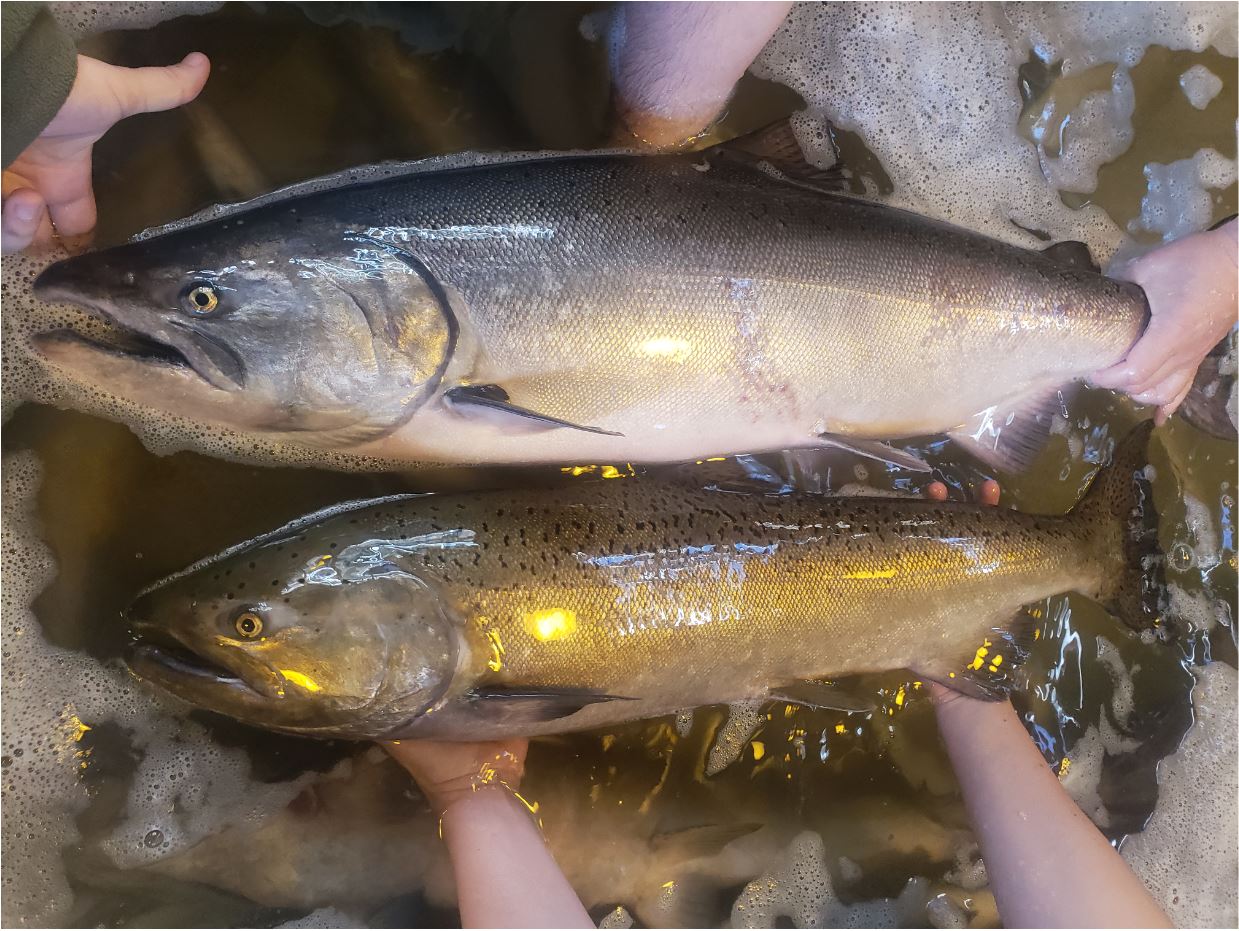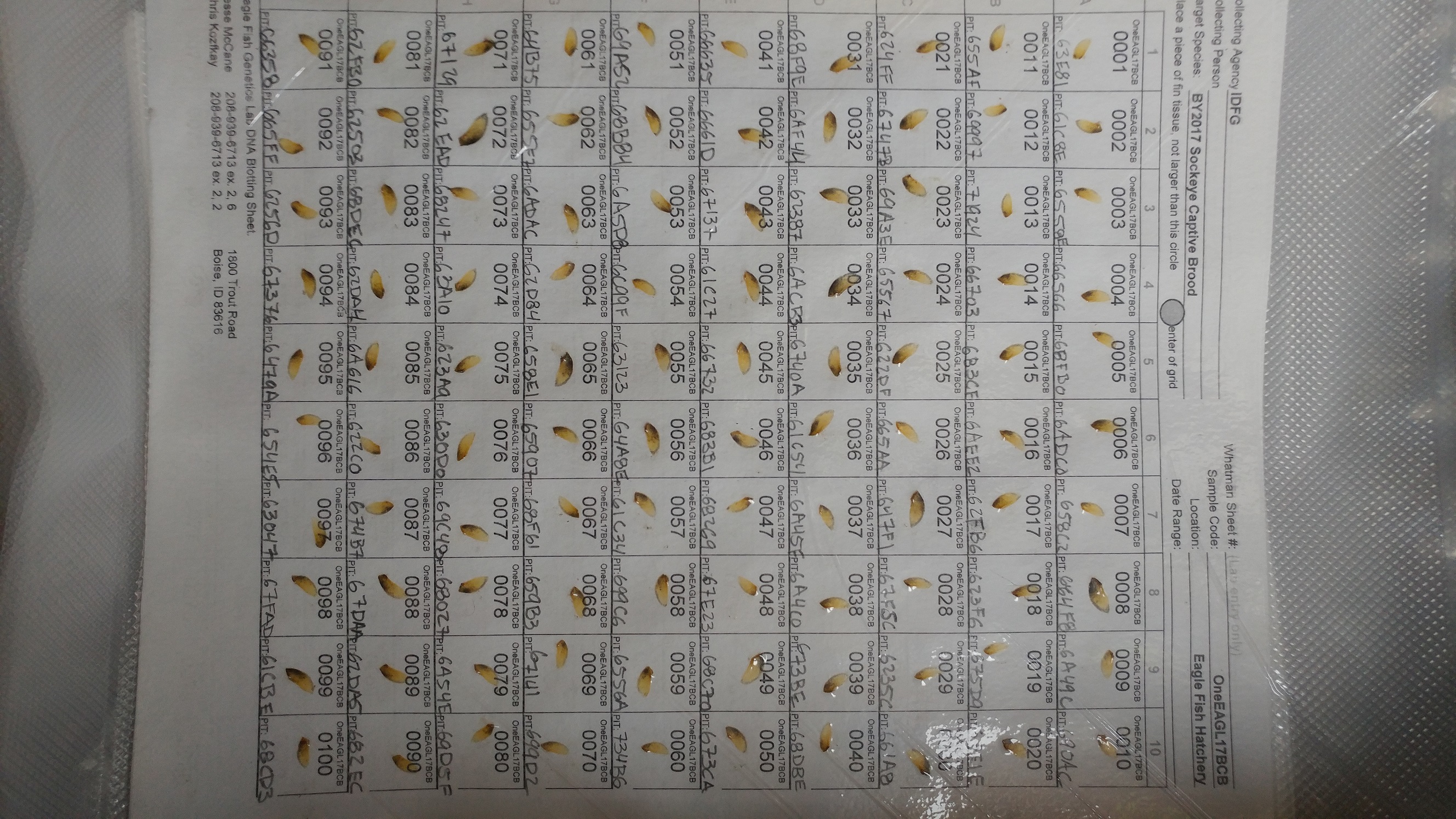Every year, Chinook Salmon that hatched in Idaho streams and hatcheries up to six years prior, return from the ocean to their natal riverine habitat to spawn. The spring/summer-run Chinook Salmon arrive in the Snake River and its tributaries from April to August and spawn in August through September. These returns can be change a lot between years, so IDFG managers have to make decisions regarding the length of the fishing season and harvest of Chinook Salmon based on the strength of the wild returns each year. Since many of Idaho’s Chinook populations are listed under the Endangered Species Act, fisheries managers seek to accurately predict the abundance of the yearly runs during the season to maintain a balance between sustaining wild stocks, meeting broodstock needs for the hatcheries, and providing a fishery.

At the Eagle Fish Genetics Lab (EFGL), the annual Spring/Summer Chinook Salmon Real-Time project uses genetic tools to provide information to managers to better make these decisions. The goal of this project is to determine the number of fish returning to specific wild populations and numbers of fish returning to specific hatcheries as they come over Lower Granite Dam - the last dam they pass on their way back to Idaho waters.

So, how does it work? First, we receive small fin clips from Chinook Salmon (see picture) that have been captured and released at the dam during their migration back to their spawning grounds. Then we analyze bits of DNA from their genomes, and generate genetic identities, also known as genotypes, for each fish. These genotypes are compared to two different reference genetic databases. One database contains genotypes from wild Chinook Salmon sampled throughout the Snake River basin over several years and has seven distinct genetic stocks (much like a fish version of 23andMe or Ancestry.com). Another database contains genotypes from every parent from all Snake River basin hatcheries over several years. By comparing the genetic identity of the fish sampled at the dam to these two databases, we can determine if a fish is wild or hatchery as well as understand which wild genetic stock (e.g. Middle Fork Salmon River) or hatchery broodstock a fish originates from.
Within about a week of receiving the fin clip samples for this project, we deliver results that provide valuable information to managers such as which wild populations are represented, how many hatchery fish are returning and their hatchery origin, the ratio of wild to hatchery returns, and which fish should be the parents of the next generation of hatchery fish. In addition to Eagle Fish Genetics Lab’s contribution to this annual project, our colleagues at Nampa Fisheries Research provide final estimates of stock abundance by length, age (based on scale samples), and sex. Truly, it takes a village to ensure Chinook salmon continue to return to Idaho waters.

